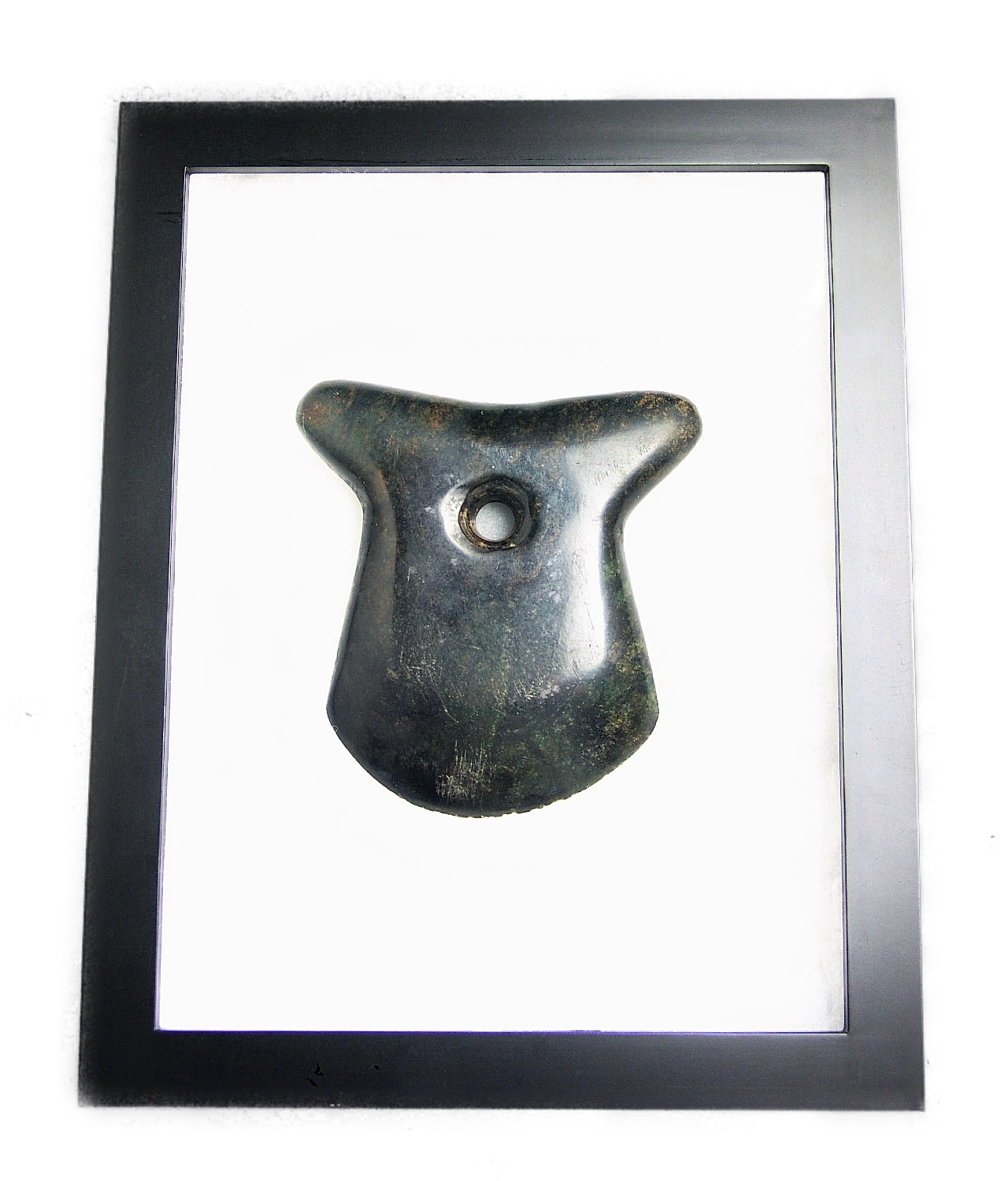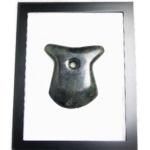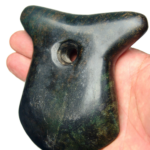Inca Serpentine Stone Axe
Intricate Details and Artistic Narrative of this
Inca Serpentine Stone
A dark green T-shaped Serpentine Inca stone axe. Both sides are polished with a perforation hole. The prior owner has cleaned one side of the stone, exposing the stone’s luster. Some wear to the edge; otherwise, it is in excellent condition. The axe measures 4.5″ in length, 4.25″ wide, and 0.75″ in thickness. Highland of Ecuador, Ca. 1400 – 1550 A.D. An excellent specimen.
This stone axe represents the fine craftsmanship of the Inca culture during the late period, just before the Spanish conquest. The “T-shaped” design, characteristic of Inca tools, reflects its utilitarian and ceremonial functions. The dark green serpentine stone, a favored material among Andean cultures, was prized for its aesthetic qualities and symbolic significance. It was believed to hold protective and spiritual powers.
The perforation hole suggests that this axe may have been hafted and potentially used in practical and ceremonial practices. The polishing on both sides indicates meticulous care in its creation, signifying its value and possibly its association with a person of status. The slight wear on the edge is consistent with use, yet the overall condition remains excellent, making it a rare artifact.
Inca stone axes like this one were integral to agricultural, construction, and ceremonial contexts, symbolizing strength and resilience. The well-preserved state of this axe, particularly its polished surfaces and intact perforation, adds to its desirability for collectors and scholars.
Overall, this serpentine axe is an exceptional example of Inca stonework, offering a tangible connection to one of South America’s most sophisticated pre-Columbian civilizations. Its historical significance and excellent condition make it a valuable addition to any collection of ancient artifacts.
Price $825 – Domestic Delivery Included
This item may become featured here in the Native American Art Magazine
Click here to see our next item.
Would you be interested in a particular piece? Please feel free to let us know.
Regional Division of Pre-Columbian Americas’ Major Archaeological Cultural Phases







